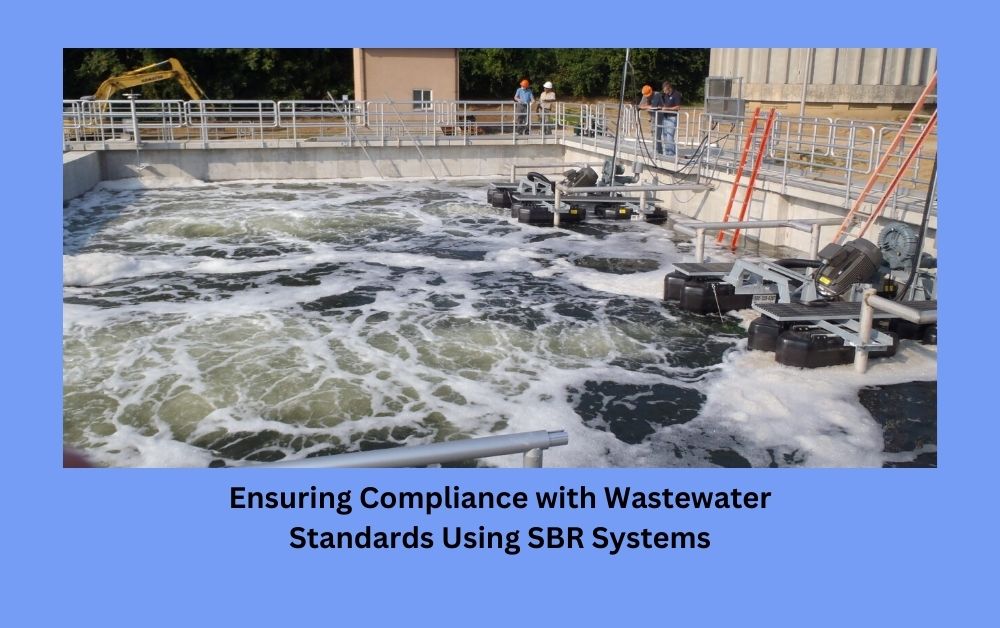Introduction: Meeting the Demands of Modern Wastewater Treatment
Wastewater treatment is no longer just a background process in urban planning or industrial operation—it’s a frontline environmental necessity. With growing awareness about pollution, water scarcity, and ecosystem health, governments and environmental agencies worldwide have tightened the standards for wastewater discharge. As a result, businesses, municipalities, and housing developments are under pressure to implement reliable treatment solutions that ensure full regulatory compliance. One such solution that has gained widespread recognition is the SBR Wastewater Treatment system (Sequencing Batch Reactor).
This blog explores how SBR systems help facilities meet wastewater standards, protect natural water bodies, and remain in good standing with regulatory authorities.
1. Understanding the SBR Wastewater Treatment System
The SBR Wastewater Treatment system is a type of activated sludge process where wastewater treatment occurs in timed batches rather than continuous flow. It integrates all treatment stages—fill, react (aeration), settle, decant, and idle—within a single tank. This flexibility makes the system highly effective in removing organic pollutants, nitrogen, and phosphorus from domestic and industrial wastewater.
Unlike traditional continuous-flow treatment plants that require separate tanks for each phase, the SBR design simplifies infrastructure while delivering excellent performance. Its ability to adapt to fluctuating wastewater volumes and compositions makes it ideal for a range of applications, from residential complexes and resorts to industrial facilities and municipal sewage systems.

2. Achieving Regulatory Compliance with SBR Technology
Regulatory bodies across the globe have set strict discharge limits on parameters such as:
- Biochemical Oxygen Demand (BOD)
- Total Suspended Solids (TSS)
- Ammonia (NH₃) and Total Nitrogen
- Phosphates and Other Nutrients
- Fecal Coliform and Pathogens
NOTE : The SBR Wastewater Treatment system is engineered to meet and often exceed these standards. Through precise control of aeration and settling times, the system effectively breaks down organic matter, removes nitrogen via nitrification and denitrification, and reduces phosphorus to safe discharge levels.
In countries where treated effluent is reused for irrigation or landscape use, SBR systems offer the level of purity required to meet reuse standards, further adding to their regulatory appeal.
3. Flexibility and Customization for Specific Requirements
One of the reasons SBR systems are so effective at ensuring compliance is their customizability. Whether the treatment plant serves a small village or a large industrial estate, the operational parameters of the SBR can be programmed to match exact water characteristics and flow patterns.
This adaptability allows engineers to fine-tune the system for seasonal fluctuations, peak demand times, or even emergency conditions. As wastewater standards continue to evolve, having a flexible system ensures long-term compliance without needing costly overhauls or expansions.
4. Ease of Monitoring and Automation
Modern SBR Wastewater Treatment system setups are equipped with programmable logic controllers (PLCs), sensors, and SCADA interfaces for full automation and remote monitoring. This digital control capability is critical for maintaining compliance.
Automated systems ensure that each phase of the batch cycle operates as intended and that any deviations in pH, oxygen levels, or flow rates trigger alerts. With real-time data and historical reporting, plant operators can make informed decisions and maintain optimal treatment efficiency. In many cases, this data is also used for environmental audits and compliance reporting.
5. Lower Operational Costs Without Compromising Compliance
Many treatment plants struggle to balance environmental compliance with budget constraints. Fortunately, the SBR system offers a cost-effective alternative to more complex multi-tank systems. It requires fewer components, occupies less space, and often consumes less energy due to its batch-based design.
Maintenance is also simpler due to fewer moving parts and compact structure. Over time, this reduced complexity results in lower operational costs—without compromising the quality of the treated effluent. For developing regions or resource-sensitive projects, this cost-to-compliance ratio is a major advantage.
6. Environmental Responsibility and Reputation
Beyond legal compliance, companies and municipalities have a broader responsibility to the environment and society. Using a high-performance SBR Wastewater Treatment system demonstrates a commitment to sustainable practices, especially in industries with high wastewater outputs like food processing, textiles, or pharmaceuticals.
Implementing an SBR system can significantly reduce a facility’s ecological footprint. Clean effluent reduces contamination risks to nearby water bodies and groundwater sources. For organizations, this environmental responsibility often translates into a stronger public image, better stakeholder trust, and easier permitting for future expansions.
Also Read : A fresh perspective: sliding doors shaping panoramic living in Dubai
7. Applications Across Various Sectors
- Residential Communities: Compact and silent SBR units serve gated communities and housing complexes.
- Hospitals and Institutions: Ensure safe effluent with minimal pathogens or pharmaceuticals.
- Industries: Customized setups handle chemical-heavy or high-nutrient wastewater.
- Tourism and Resorts: Meet reuse and discharge standards without disturbing guests.
Whether it’s a five-star hotel or a rural treatment facility, the ability to comply with wastewater standards consistently is what makes the SBR system such a popular choice.
Conclusion: BLACKWOOD HODGE – Driving Compliance with Quality
Compliance with wastewater treatment regulations is non-negotiable for today’s responsible businesses and municipalities. The SBR Wastewater Treatment system in Uganda stands out as a versatile, efficient, and sustainable technology that supports these compliance goals with precision and reliability.
At the forefront of delivering these systems in Uganda and beyond is BLACKWOOD HODGE. With their deep technical expertise, commitment to quality, and focus on regulatory alignment, BLACKWOOD HODGE has become a name trusted by industries and communities alike. Whether it’s a new installation or upgrading an old facility, clients turn to BLACKWOOD HODGE to ensure they stay compliant, efficient, and environmentally responsible—every step of the way.

